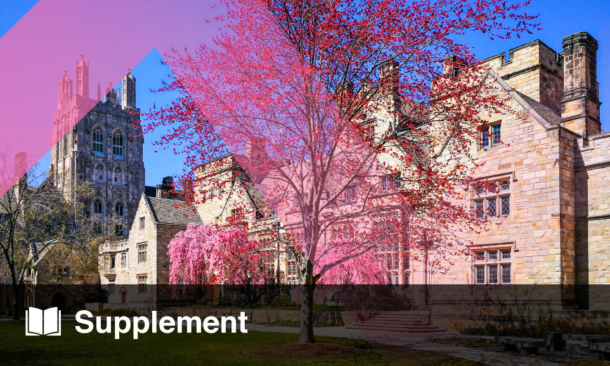THE 10th anniversary Congress of the European Academy of Neurology (EAN) in Helsinki, Finland, marked a significant milestone in European neurology collaboration.
The historic coastal city of Helsinki, regarded for its seamless integration of nature and urban culture, was more than an idyllic location for the EAN 2024 Congress. Innovative research on weak magnetic fields in human brains, leading to the development of advanced imaging techniques, and recent discoveries by Finnish investigators on the molecular genetic causes and risk factors of numerous nervous system disorders demonstrate Finland as a neurology research hub. These breakthroughs made Helsinki the optimal stage for the EAN 2024 Congress.
Paul Boon, EAN President, and Alice Accorroni, Chair of the Resident and Research Fellows Section (RRFS), commenced the Welcome Ceremony, celebrating a decade of remarkable achievements and reflecting on the future of EAN. Notably, since EAN’s inception in 2009 and inauguration in 2014, more than 110,000 participants have attended the Congress, 21,846 abstracts have been submitted, and over 21,500 annual individual memberships have been renewed. Expressly, 2024 set new records with over 7,000 in-person and 2,000 virtual participants from 112 countries, 370 invited speakers, and 2,777 submitted abstracts.
Moreover, the EAN has expanded its network, now comprising 48 national neurological society members, with Malta being the latest addition. The EAN’s mission to foster community is evident in its board members’ visits to 14 countries in 2024, participating in national neurological society meetings, such as the American Academy of Neurology Congress and the Swiss Brain Plan.
One of the significant accomplishments of the EAN board and scientific team was the drafting and publishing of ‘Strategic Neurological Research Agenda for Europe: Towards Clinically Relevant and Patient-Centred Neurological Research Priorities’. Boon highlighted how, prior to this publication, there was a complete absence of a unifying document providing an up-to-date research agenda for European neurology research, but at the same time, patient-centred and clinically relevant for neurologists. The EAN has attempted to fill the gap with the publication of this paper, which is just one step to enhancing the phase of clinical neurology in the European space.
Discussing the future of patient care, Boon stressed the burden of neurological diseases, which constitute 43% of the global disease burden and cost Europe approximately 1.7 trillion EUR. The forthcoming COIN-EU study led by the
EAN aims to provide comprehensive cost data for neurological diseases across Europe. Additionally, the EAN established new task forces on environmental influences in neurology and AI in clinical neurology, reflecting the EAN’s commitment to addressing the global burden of neurological diseases and emerging challenges.
This year’s Congress focused significantly on the EAN’s Brain Health Mission, which promotes brain health awareness. Boon noted that brain health is essential to the general public and neurologists, as very few parts of the medical curriculum are devoted to prevention. The dream, as introduced by Boon, would be for “young kids throughout Europe to think or have an idea about brain health, just as they have the proper idea about dental hygiene.” Accordingly, the RRFS launched the NeuroArt contest to celebrate 10 years of EAN and RRFS, and to present European neurologists’ creativity. Accorroni stated that creativity and art boost wellbeing and promote brain health, a concept at the heart of the EAN agenda.
Revolutionary chocolatier Dominique Persoone, creator of the Chocolate Line lab in Brussels, delivered a talk exploring the myriad ways to experience chocolate. Notable creations presented during the opening ceremony included the ‘chocolate shooter’, which involved snorting chocolate powder through the nose, enabling aromas to be absorbed swiftly by the brain. The entire welcome ceremony auditorium participated in a taste of three of Persoone’s creations, where he combined sound, scents, and chocolate to create an interactive and sensational experience.
Boon discussed the established evidence-based benefits of having a healthy relationship with chocolate. Multiple studies demonstrated the association of high levels of flavonoids and polyphenols in dark chocolate with neuroprotection and increased neuronal and vascular cell growth in memory networks. While the mechanisms are not fully understood and may be linked to the antioxidant effect of flavonoids on inflammation, underlying mechanisms of brain ageing, the positive effect of dark chocolate on human cognition and happiness is clear.
After the audiences’ chocolate tasting session, Boon invited President-Elect Elena Morrow to the stage where together they awarded Elinor Ben-Menachem, University of Gothenburg, Sweden, and Nils Erik Gilhus, University of Bergen, Norway, with EAN Honorary Memberships for their significant contributions to neurology. Ben-Menachem thanked the EAN board, award committee, and one of her early career mentors, Wallace Tourtellotte, stating that the award was final evidence of her acceptance into European society and evidence of her impact on patient lives. Gilhus called the EAN the “best instrument through international cooperation to improve treatment for brain disorders and to promote brain health”, calling on neurologists to take what they learn at EAN to improve patient care.
Following the award presentations and an address by Reetta K. Kälviäinen, President of the Finnish Neurological Society, the welcome ceremony concluded with a musical performance and birthday song for EAN’s 10th anniversary, showcasing the Kantele, a traditional Finnish instrument.
EMJ was thrilled to be part of the EAN 2024 Congress and looks forward to attending the 2025 Congress, which will take place in Seville, Spain. Until then, enjoy the highlights presented at this year’s Congress.
Ethnic Differences in Access to Stroke Care in Europe
LATEST research presented at the EAN 2024 Congress has brought to light ethnic and racial disparities in access to stroke treatments in Europe.
Researchers from the Agostino Gemelli University Polyclinic Foundation IRCCS in Rome, Italy, conducted a retrospective cohort study which aimed to evaluate the effect of geographic origin and race on access to acute stroke care and treatment. The study utilised data collected between 2015–2022 at the institution’s emergency department. The participants were divided into two groups: Western Europeans and non-Western Europeans.
Results showed that the non-Western European group had a lower likelihood of receiving intravenous thrombolysis, which is the standard reperfusion treatment for patients with acute ischaemic stroke. Additionally, emergency department access for stroke mimics was less frequent among racial minority groups, and Black and Asian individuals had a higher incidence of brain haemorrhages compared to White individuals.
Intravenous thrombolysis is crucial for treating acute ischaemic stroke, it must be administered within 9 hours of stroke onset. Early recognition of symptoms and timely intervention are critical. However, the study noted that language and cultural differences could have an impact on prompt administration of treatment in non-Western European patients in Western hospitals.
While racial inequalities in stroke management have been extensively documented in the USA, this study is the first of its kind in Europe. The findings of which demonstrate that these disparities exist even within universal healthcare systems and are not solely due to the presence or absence of universal insurance.
The researchers call for immediate measures to address these disparities by employing educational campaigns for healthcare personnel and 24-hour availability of interpreters at healthcare facilities to ensure adequate care is provided across all racial groups.
Parental Smoking Linked to Higher Multiple Sclerosis Risk
RESULTS from a new study presented at the EAN 2024 Congress showed that maternal smoking during pregnancy, and exposure to parental smoking during early years of life, can significantly increase the risk of developing multiple sclerosis (MS) later in adulthood.
The study was part of the Environmental Risk Factors in Multiple Sclerosis (EnIMS) project, which is a large multinational case-controlled, population-based study. The researchers analysed data from Canadian, Italian, and Norwegian populations to investigate the link between MS and maternal and parental smoking habits. Active smoking is a known risk factor for MS and poor prognosis; however, the impact of past exposure to parental smoking, particularly maternal smoking during pregnancy, had not yet been clearly defined. The researchers aimed to study if parental smoking could be associated with MS status.
The results revealed a strong association between MS and maternal smoking during pregnancy among Norwegians, while paternal smoking showed a tendency to be associated with MS among Canadians. However, no significant association with parental smoking was found in the Italian population. The absence of consistent associations across all populations may indicate that parental smoking’s impact on MS risk is smaller compared to other factors. MS is a complex disease influenced by a combination of genetic and environmental factors. With the timing of exposure, these environmental factors such as breastfeeding and mononucleosis, play an important role.
The researchers stressed that parental smoking needs to be investigated further, as exposure to parental behaviour can affect the child’s risk of developing non-communicable diseases, such as diabetes and cardiovascular diseases. Future research should focus on exploring MS risk factors in more depth, along with patient prognosis. Especially since parental smoking habits are a new concept in MS.
The Link Between Nightmares and Dementia
ADULTS who frequently have distressing dreams are significantly more likely to experience cognitive decline and develop dementia, according to research carried out at Imperial College London, UK.
Numerous psychological factors can cause nightmares, including stress, anxiety, and depression. Additionally, research has revealed genetic factors that may underpin the likelihood of an individual experiencing distressing dreams. The impact of nightmares on neurological conditions is a growing field of interest, and previous research has established a relationship between nightmares and Parkinson’s disease. A study recently presented at the EAN 2024 Congress is the first to investigate the effect of distressing dreams on cognitive decline and the development of dementia.
The research team analysed data from middle-aged adults from the Midlife in the United States (MIDUS) study, and from 2,600 older adults from the Osteoporotic Fractures in Men Study (MrOS) and the Study of Osteoporotic Fractures (SOF). The results demonstrated that middle-aged adults who reported having weekly distressing dreams were four times more likely to experience cognitive decline than those who reported having no distressing dreams. Similarly, older adults experiencing distressin dreams were 2.2 times as likely to develop dementia.
This pioneering study highlights the importance of dreams in neurological research, particularly the impact of nightmares on neurodegeneration. The results may enhance awareness among physicians regarding the significance of understanding the impact of dreams on patients’ neurological health. Possible strategies to reduce the frequency of distressing dreams include neuropsychiatric medication to treat the psychological basis and image rehearsal therapy, a cognitive behavioural therapy specifically designed to treat nightmares.
Auricular Vagal Nerve Stimulation in Patients with Mild Cognitive Impairment due to Alzheimer’s Disease
ADAM Broncel, on behalf of his team at Neuromedical, Lodz, Poland, presented a study in a late-breaking news session at the EAN 2024 Congress on the use of auricular vagal nerve stimulation in patients with mild cognitive impairment due to Alzheimer’s disease.
Previous studies have shown that vagal nerve stimulation activates limb structures involved in memory processing and has a proven cognitive-enhancing effect on patients with Alzheimer’s disease.
For this trial, auricular transcutaneous vagal nerve stimulation was applied to the study subjects during sleep, for a period of 3 and 6 months. This was a randomised, double-blind, placebo-controlled study with the patient’s compliance controlled via a dedicated software with continuous cloud data collection. The inclusion criteria comprised females and males aged ≥49 and ≤85 years who met the diagnostic criteria for mild cognitive impairment due to Alzheimer’s disease, confirmed by psychological tests. For this study, Broncel and colleagues excluded individuals who presented neurological or psychiatric disorders, clinically relevant medical comorbid medical conditions, or implantable medical devices.
From this criteria, 60 randomised patients were selected, with 51 of those successfully completing the study. Of this cohort, 35 were in the active group, expressing mild cognitive impairment due to Alzheimer’s, and 16 comprised the placebo group. The ADAS-COG score, the primary outcome in this study, is a cognitive rating scale, designed to assess the cognitive and behavioural domains affected by Alzheimer’s disease. Broncel showed that the ADAS-COG score changed from baseline in sham and treatment patients at Weeks 4, 8, and 12. Compared to the sham group, those receiving treatment exhibited a significant decline in ADAS-COG. As ADAS-COG is a measure of the patient’s mistakes, this decline suggests cognitive improvement from those treated with auricular transcutaneous vagal nerve stimulation.
The team continued the follow-up to Week 26, with cognitive improvement persisting in the treatment group only. Patients from Weeks 26–60 were then not treated and assessed again at Week 60, showing a decline in cognitive function. These findings show statistically significant cognitive improvement between placebo and active treatment in the ADAS-COG score, as well as improvements in other tests, such as the verbal memory probing tests. Broncel concluded that auricular vagal nerve stimulation could be an effective therapeutic treatment for mild cognitive impairment and patients with early Alzheimer’s disease.
Opioids and the Risk of Dementia
“AS THE world population continues to increase and humans live longer and longer, the prevalence of dementia is rising,” began Nelson Pourhadi, Danish Dementia Research Centre, Copenhagen, Denmark, in his presentation at the EAN 2024 Congress.
He added that it is estimated that by the year 2050, there will be around 140 million people living with dementia. Pourhadi wished to analyse the association between dementia and opioid use, which is also increasing rapidly worldwide.
Previous research has shown the potential links between neuroinflammation and opioid use, and the temporary, reversible effects of opioids on the brain, which are well-documented; however, their effect on cognition and dementia is still unknown. In order to analyse this connection, Pourhadi conducted research involving 1,872,854 individuals from the Danish National Registries, aged between 60–75 years. Within this group, 93,638 patients developed dementia between 2000–2020. The team monitored opioid use amongst the cohort within 5 years of the diagnosis.
They found that the use of opioids was associated with a slightly increased risk of all-cause dementia before 90 years old, in the general population. Opioid exposure below 90 total standardised dose (TSD; 1 TSD is equivalent to 30 mg oral morphine) was not consistently associated with dementia. Exposure to more than 90 TSDs was significantly associated with an increased risk of dementia. The team found that this was the case even with weak opioid use and that there was an increased risk of dementia with over 90 TSDs of opioids, regardless of when the patients stopped treatments with regards to dementia diagnosis.
The full study analysed various other contributing factors such as the role of chronic pain; however, this research provided important evidence that opioid use above 90 TSDs increases the risk of developing dementia. Increasing opioid use additionally increased the risk of dementia. Pourhadi emphasised the importance of this research and the need for further studies analysing the causality between this association, as well as investigating the various subtypes of dementia.
Anticoagulant Versus Antiplatelet Treatment for Secondary Stroke Prevention in Patients with Active Cancer
RESEARCH presented at the EAN 2024 Congress explored the association between cancer and strokes; with approximately one-to-two out of 10 patients with stroke having a co-diagnosis of cancer. Furthermore, up to 10% of patients with cryptogenic stroke also have occult cancer, defined as a new diagnosis of cancer within a year after stroke.
To explain the aetiology of this association, Kielkopf noted several biological factors, such as hypercoagulability, adverse effects of treatments, and stress. Both cancer and stroke also share common risk factors, including atrial fibrillation, obesity, and tobacco use. Clinical characteristics of cancer-related strokes include multi-territory infarction and certain laboratory findings, namely elevated d-dimer, white blood cell count, thrombocytes, fibrinogen, c-reactive protein, lactate dehydrogenase, and reduced haemoglobin. Furthermore, patients also typically show absence of susceptibility vessel signs.
The study in question aimed to investigate the outcomes of acute ischaemic stroke in patients with active cancer based on the type of antithrombotic therapy for secondary prevention in a real-world population: anticoagulation versus antiplatelet therapy. The inclusion criteria comprised individuals with active cancer, defined by the International Society on Thrombosis and Haemostasis (ISTH) as “new or recurrent cancer diagnosed or treated within 6 months prior to the index stroke, or a metastatic cancer.” The researchers excluded individuals with a cancer diagnosis after hospital discharge, no secondary prevention documented at discharge, cardioembolic stroke, and death during index hospitalisation.
The types of anticoagulation treatments included vitamin K antagonists, low molecular weight heparins, and direct oral anticoagulants, whilst the antiplatelet drugs included aspirin and clopidogrel. As noted by Kielkopf, the primary outcome was the overall mortality within a year after index arterial ischemic stroke. One hundred and thirty five patients were included in the final study, 58 of which treated with anticoagulation and 77 treated with antiplatelet therapy at time of discharge.
Summarising the key findings, Kielkopf noted that patients suspected of having highly active paraneoplastic coagulopathy are often treated with anticoagulation and show poorer outcomes after stroke. Additionally, results showed no clear superiority of anticoagulation over antiplatelet drugs as secondary prevention in cancer-related strokes.
New Advances in Predicting Outcomes in Autoimmune Encephalitis
RECENT findings highlight significant advancements in predicting the outcomes of anti-N-methyl-d-aspartate receptor (anti-NMDAR) encephalitis (anti-NMDARE), a treatable condition often leading to long-term disability.
Anti-NMDARE is characterised by antibodies against the NMDAR in the brain, causing severe neurological symptoms. While treatable, the condition often results in prolonged recovery periods. The existing anti-NMDARE One-Year Functional Status (NEOS) scores the likelihood of a patient’s independence 1-year post-diagnosis, factoring in the effects of the first-line treatment after 4 weeks. Researchers have developed a new predictive model, NEOS2, which forecasts patient outcomes before treatment initiation and identifies those likely to benefit from first-line treatment. The new NEOS2 model offers predictions during diagnosis, potentially guiding early treatment decisions more effectively. These findings were presented as late-breaking research at the EAN 2024 Congress.
This study was international and multicentric, combining data from cohorts in France, Germany, the Netherlands, Spain, and Japan, involving 712 patients (79% female, average age 23 years). Researchers developed and validated multivariable models to predict three outcomes: improvement after first-line treatment (NEOS2-T), 1-year functional status (NEOS2), and return to school or work (NEOS2-W). The predictive accuracy of these models was assessed through logistic regression analyses and simplified for clinical application. The NEOS2 model demonstrated a predictive accuracy of 80%, comparable to the original NEOS score. The NEOS2-T model showed a predictive accuracy of 81–83% for predicting improvement following first-line immunotherapy, effectively identifying patients who might benefit from early intensified treatment, and potentially enhancing patient outcomes through the development of tailored treatment strategies.
Notably, high accuracy of the NEOS2 score in predicting long-term outcomes was observed. Approximately 80% of patients were independent 1-year after diagnosis, and 74% had resumed school or work. The NEOS2-T and NEOS2 scores accurately distinguished between patients with a high likelihood of improvement and those at risk of first-line treatment failure, with corresponding predictions for acceptable and poor outcomes. Furthermore, the ability to predict return-to-school or work outcomes, which is a very long-term measure (3 years), using the same variables underscores the robustness of the NEOS2 model.
The authors concluded that the NEOS2 model represents a significant advancement in the management of anti-NMDARE. It offers clinicians a powerful tool to predict patient outcomes and tailor treatments effectively from the point of diagnosis, leading to proactive management. Future research should further validate these models and explore their integration into clinical practice to improve patient care and outcomes.
Transcranial Ultrasound Shows Promise in Parkinson’s Disease Diagnosis
NEW findings have highlighted the potential of transcranial ultrasound (TU) as a diagnostic tool for Parkinson’s disease (PD) in a Swedish population.
There is significant diagnostic uncertainty in PD, with an estimated 10–25% misdiagnosis. Moreover, the current gold standard approach is post-mortem histology. Therefore, there is a need for complementary, cost-effective tools to diagnose PD and distinguish between atypical parkinsonism and essential tremor. Despite the established use of TU to detect hyperechogenic substantia nigra (SN+) as a biomarker for PD, its clinical relevance in Sweden has remained unclear until now. This study evaluated the diagnostic value of TU, and the results were presented at the EAN 2024 Congress.
From 2013–2017, a cohort of 75 patients with Parkinsonism was examined using TU to investigate the SN+ status concerning PD, atypical Parkinsonian disorders, and essential tremors. The study aimed for an extended follow-up period to ensure accurate final diagnoses. By 2024, the mean follow-up time reached 95 months, during which the initial diagnosis was revised in 36 cases, amounting to a significant 47% of the patients. Three patients were excluded from the study due to inadequate transcranial bone windows for TU.
The findings revealed that 41 out of 56 true patients with PD exhibited the SN+ finding, while only two of the 16 patients without Parkinson’s did so, highlighting a statistically significant association (p<0.001). The study reported a sensitivity of 73% and an accuracy of 76%, indicating some limitations in TU’s standalone diagnostic efficacy. However, the specificity and positive predictive value were notably higher at 87.5% and 95.3%, respectively.
Researchers concluded that TU could be a valuable supplementary tool in PD diagnostics within the studied population, particularly due to the high probability of SN+ supporting an early diagnosis. However, they cautioned against using TU as a primary diagnostic method due to its unsatisfactory sensitivity and accuracy. The researchers emphasised the need for further studies, mainly focusing on TU reproducibility and comparative studies between TU and PET/single-photon emission computed tomography imaging.
Chimeric Antigen Receptor T Cell Therapy: A New Treatment for a Demyelinating Central Nervous System Disease
FEMALE and Asian populations are the most often diagnosed populations with neuromyelitis optica spectrum disorder (NMOSD), a central nervous system (CNS) demyelination disease. A recent clinical trial from Wuhan, China used resident CNS B cells as a target for a novel chimeric antigen receptor (CAR) T cell therapy.
NMOSD is characterised by the presence of the anti-AQP4 antibody, leading to severe neurological impairment and high relapse rates. Ninety percentage of positive serum tests for NMOSD are female patients, and Asian populations are three times more likely to have the condition compared to non-Asian groups. At the 2024 EAN Congress, Chuan Qin of Tongji Hospital, Wuhan, China, presented a recent study that conducted a single cell analysis of an anti-B cell maturation antigen (BCMA) CAR-T cell therapy in patients with CNS autoimmunity, namely NMOSD.
The research indicated a significant expansion of plasmablasts and plasma cells in cerebrospinal fluid (CSF) samples from patients with NMOSD. Unlike circulating B cells, these CNS-resident B cells showed enrichment in complement, IL-6, suggesting that CSF and blood B cells have different origins. Current treatment options for NMOSD are monoclonal antibody therapies, of which there are three; however, mAb treatments face limitations due to poor blood–brain barrier penetration.
In their study, Qin and colleagues investigated solutions to overcome this shortfall, designing BCMA CAR-T cell therapy to target an antigen predominantly expressed in plasma cells and mature B cells, BCMA. CAR-T cells have much better permeability through the blood–brain barrier. The clinical trial followed a ‘3+3’ dose-escalating design with patients with NMOSD who had recurrent attacks despite standard treatments.
Results showed significant improvements, with 92% achieving drug-free remission at a median follow-up of 5.5 months. Notably, 50% of patients had improved visual acuity, 67% showed better ambulation, and 75% had enhanced bowel and bladder function. Single-cell analysis revealed that CAR-T cells displayed increased gene expression related to immune response and chemotaxis, aiding their entry into the CNS and resulting in neuroinflammation suppression.
Although promising, limitations should be considered when evaluating the significance of results including the small sample size of 12 patients. However, there is a strong basis for further research on the subject given the anti-BCMA CAR-T cells effectively crossed the blood-CSF barrier, targeted pathogenic plasma cells, and mitigated neuroinflammation in patients with NMOSD, demonstrating a therapeutic potential.







